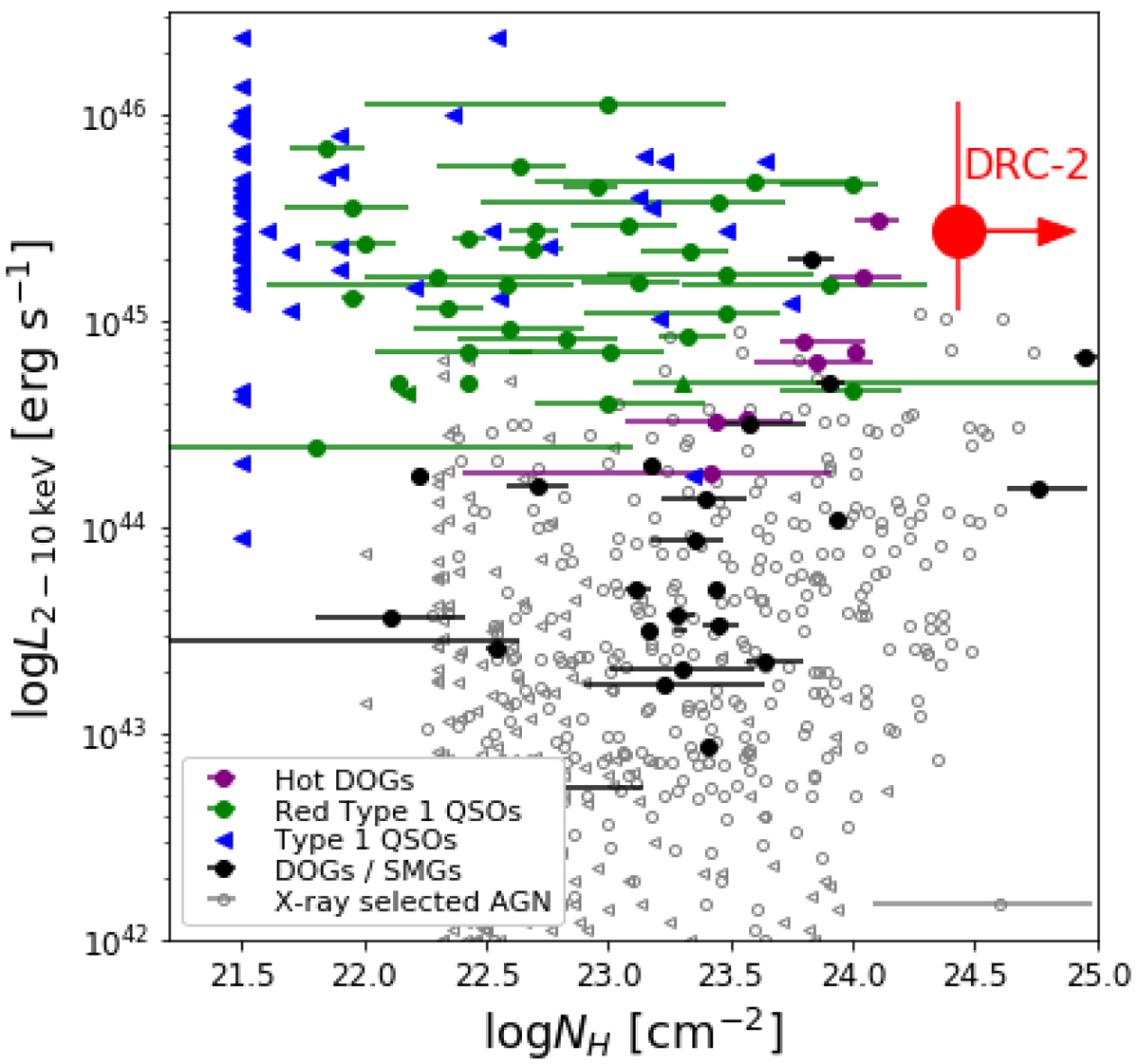Fig. 4.

Intrinsic X-ray luminosity versus obscuring column density for DRC-2 (red symbol) compared with several sub-populations of AGN. Only objects detected in the X-rays are included. Hot dust-obscured galaxies (Hot DOGs; purple symbols) are collected from Stern et al. (2014), Assef et al. (2016), Ricci et al. (2017), Vito et al. (2018), and Zappacosta et al. (2018). Red Type 1 QSOs (or Extremely Red QSOs, ERQs, green symbols) are from Urrutia et al. (2005), Banerji et al. (2014), Mountrichas et al. (2017), Goulding et al. (2018), and Lansbury et al. (2020). Type 1 QSOs (blue symbols) are collected from Just et al. (2007, arbitrarily placed at log NH = 21.5) and Martocchia et al. (2017). Dust obscured galaxies (DOGs) and SMGs (black symbols) are collected from Wang et al. (2013), Corral et al. (2016), and Zou et al. (2020). Grey symbols represent X-ray selected AGN population in the Chandra deep field-south (Li et al. 2019), with typical error bars showed in the lower right corner of the figure. Leftward pointing arrows represent upper limits on the column density.
Current usage metrics show cumulative count of Article Views (full-text article views including HTML views, PDF and ePub downloads, according to the available data) and Abstracts Views on Vision4Press platform.
Data correspond to usage on the plateform after 2015. The current usage metrics is available 48-96 hours after online publication and is updated daily on week days.
Initial download of the metrics may take a while.


